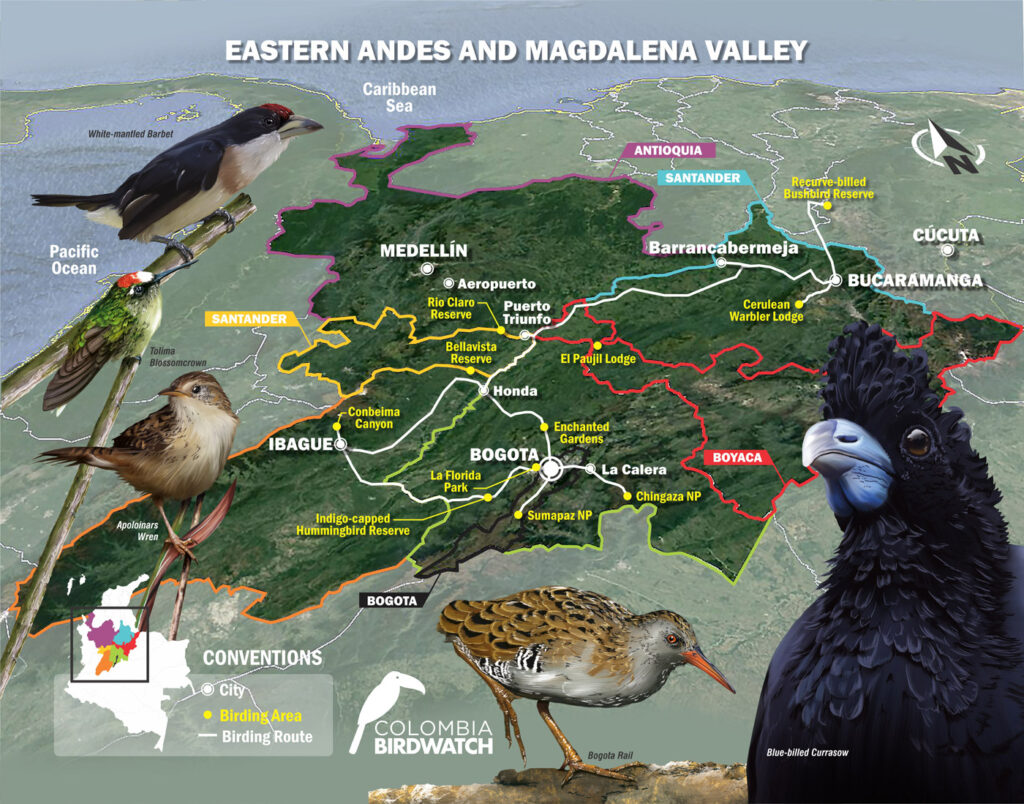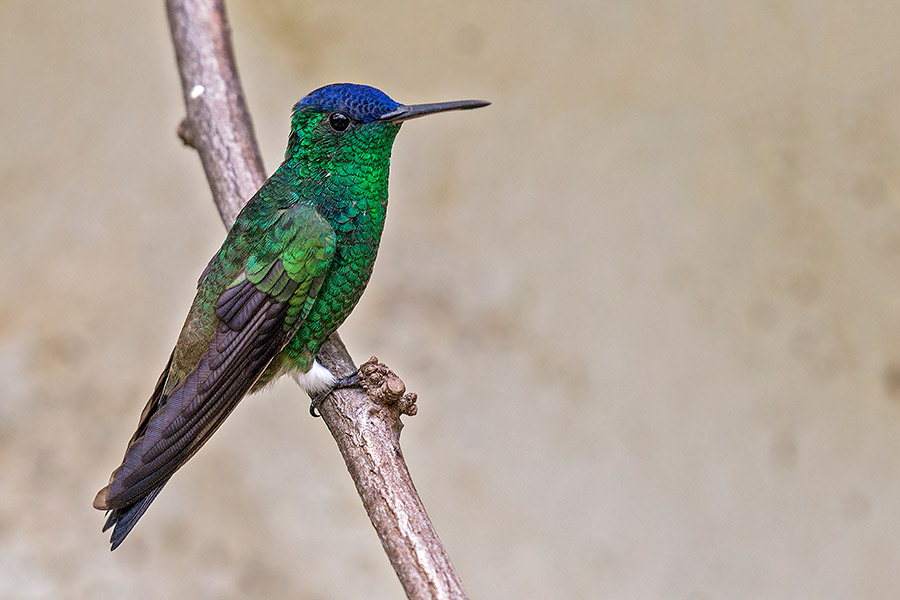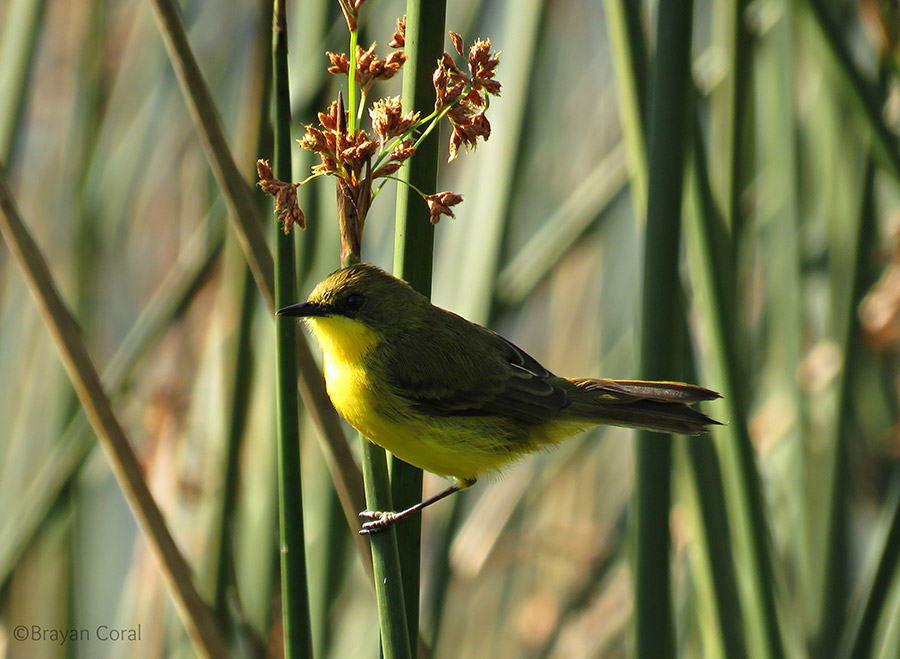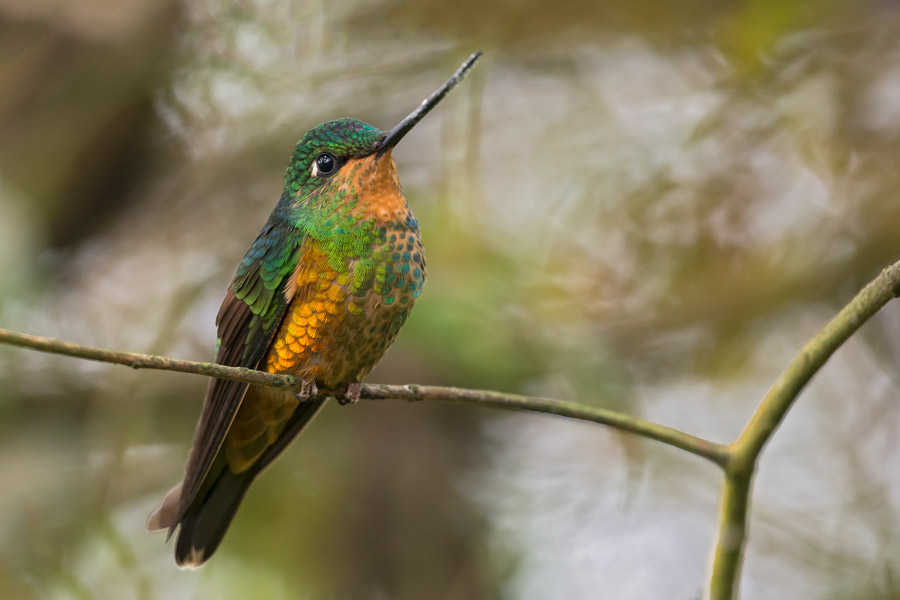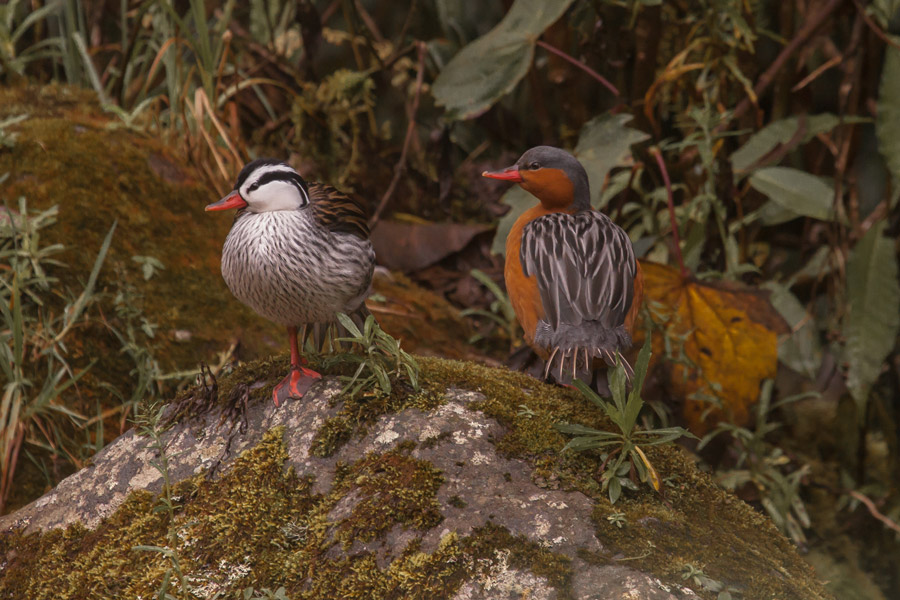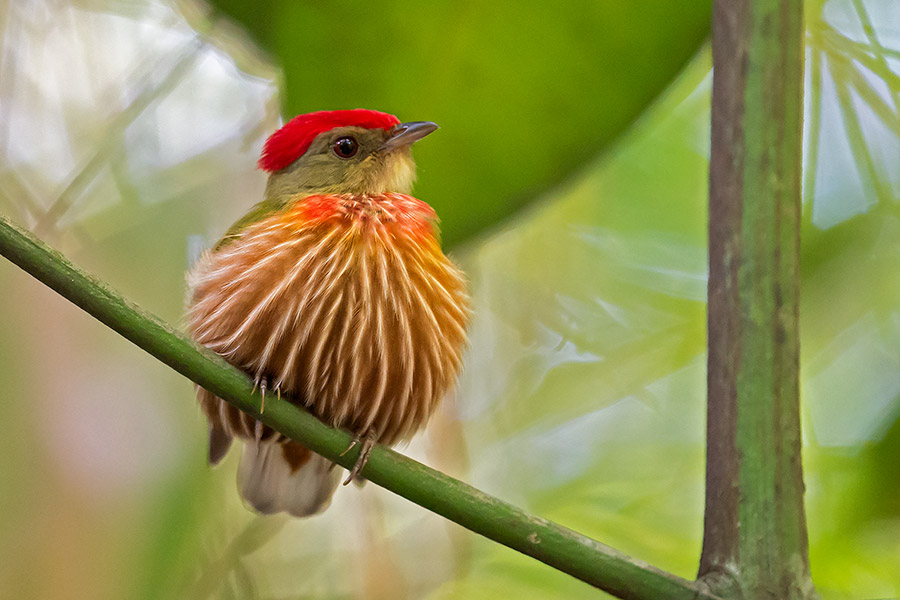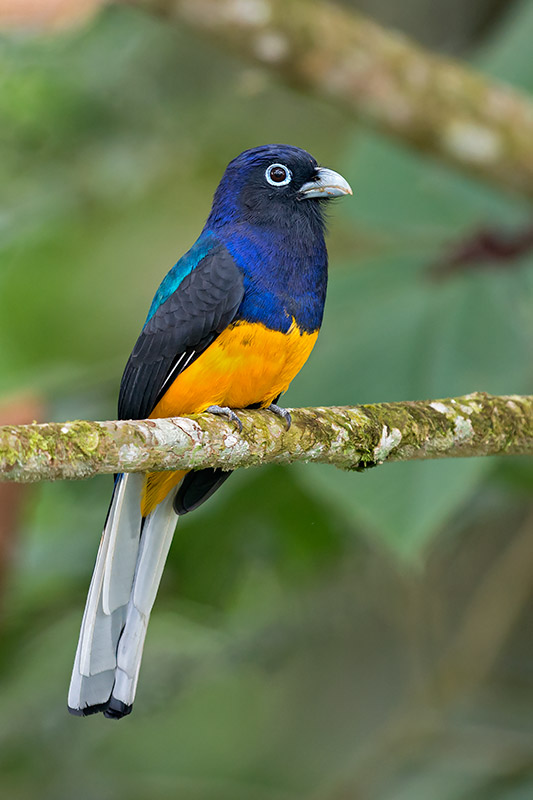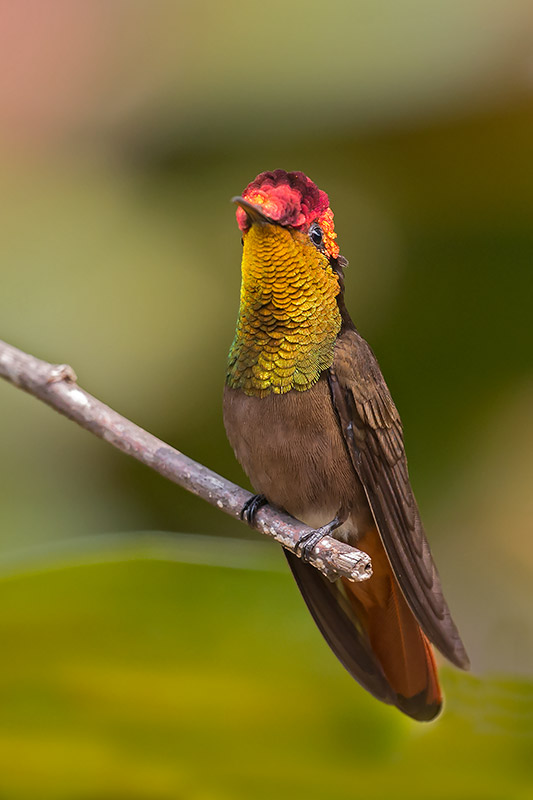This route focuses on the birding sites near the capital city of Bogota (2,600 m) and the extensive Magdalena Valley , which is reached by descending eastward from Bogota towards the important river that gives the valley its name. The eastern Andes are the widest of the three Andean ranges, with various plateaus that harbor wetlands that are home to many sought-after species. From the capital at 2,600 m (8,500 ft), it is also easy to access various parks that protect the paramo ecosystems (up to 4,300 m or 14,000 ft) in search of high elevation specialists. In contrast, the lower elevations of the Magdalena Valley (300 – 600 m or 1,000 – 2,000 ft), contain small remnants of humid tropical forests that have been sparred from agricultural conversion.
Best Months to Visit:
Late November to late March and late June to early September.
Connecting Routes:
Easily by land with the Central Andes and the Northern Portion of the Western Andes route. Easily by air with any of our other Colombia routes.
AREAS IN THIS ROUTE
Descending towards the Magdalena Valley, near the municipality of Fusagasuga, the reserve has an impressive number of feeders that attract more than 20 species of hummingbirds.
Targets Upper Portion
Indigo-capped Hummingbird (E), White-bellied Woodstar, Green Hermit, Black-throated Mango, White-vented Plumeteer, Gorgeted Woodstar.
La Florida is a large urban park located within Bogota an is easily accessed from the international airport. The park includes areas with open water as well as vegetated wetlands and urban forest.
Targets:
Bogota Rail (E), Silvery-throated Spinetail (E), Apolinar’s Wren (E), Nobel Snipe, Subtropical Doradito, Spot-flanked Gallinule, Rufous-browed Conebill.
The national park protects 76,000 ha (190,000 ac) of paramo and Andean cloud forest, providing 80% of Bogota’s drinking water and immense possibilities for birders. Created in 1977, the park is easily accessed from Bogota in about two hours and is also home to several lagoons and wetlands.
Targets:
Silvery-throated Spinetail (E), Green-bearded Helmetcrest (E), Bogota Rail (E), Brown-breasted Parakeet (E), Blue-backed Conebill, Hooded Mountain-tanager, Smoky Bush-tyrant, White-chinned Thistletail, Black-headed Hemispingus, Amethyst-throated Sunangel, Long-tailed Sylph, Black-tailed Trainbearer, Green-tailed Trainbearer, Tyrian Metaltail, Glowing Puffleg, Coppery-bellied Puffleg (NE), Shining Sunbeam, Blue-throated Starfrontlet (NE), Sword-billed Hummingbird, Great Saphirewing, Purple-backed Thornbill.
Declared a national park in 1977, Sumapaz NP is considered to harbor the largest paramo ecosystem in the world, and thus can hide many nice surprises. This site can be combined easily for a day of birding with Chicaque, a private cloud forest in the outskirts of Bogota.
Targets:
Silvery-throated Spinetail (E), Green-bearded Helmetcrest (E), Bogota Rail (E), Apolinar’s Wren (E), Rufous-browed Conebill (NE), Pale-bellied Tapaculo (E), Noble Snipe, Black-headed Hemispingus, Rufous Antpitta, Coppery-bellied Puffleg (NE), Glowing Puffleg, Amethyst-throated Sunangel, Blue-throated Starfrontlet (NE).
A descent road ascends from the city of Ibague towards the glaciated Tolima Volcano, covering a nice altitudinal gradient with some very interesting species (265 species have been recorded along the road). The canyon is located on the eastern flank of the central Andes, and provides drinking water to the city of Ibague.
Targets:
Yellow-headed brush-finch (E), Tolima Blossomcrown (E), Tolima Dove (E), Torrent Duck, Ash-colored Tapaculo, Superciliaried Hemispingus, Red-hooded Tanager, Agile Tit-tyrant, Crested Quetzal, Chestnut-breasted Chlorophonia.
Covering a small but well-preserved tract of lowland tropical rainforest, the Bellavista Reserve is sure to fulfill your ornithological cravings. At around 800 m in elevation (2600 ft), the reserve can be accessed easily from the colonial city of Honda, and with luck one can see many of the targets during a morning of birding.
Targets:
Velvet-fronted Euphonia (E), Beautiful Woodpecker (E), White-mantled Barbet (E), Sooty Ant-tanager (E), Antioquia Bristle-tyrant (E), Saffron-headed Parrot (NE), Tody Motmot, Black-faced Antthrush, Olivaceous Piculet, Violet-bellied Hummingbird, Striped Manakin, Blue-crowned Manakin, White-bearded Manakin.
Rio Claro is a private reserve that has existed since 1970, and protects important tracts of lowland tropical forest that is very easy to access from the main Medellin-Bogota highway. The reserve covers 250 hectares (620 acres), and is an obligatory stop if one is in search of the Magdalena endemics or any of the 480 species that have been recorded in the reserve. This is a surprising number as the reserve only covers a 200 m (700 ft) gradient.
Targets:
Magdalena Antbird (E), Antioquia Bristle-tyrant (E), Beautiful Woodpecker (E), White-mantled Barbet (E), Sooty Ant-tanager (E) Saffron-headed Parrot (NE) , Barred Puffbird, Channel-billed Toucan, Collared Aracari, Black-faced Antthrush, Pacific Streaked Antwren, Checkered Antwren, Moustached Antwren, Cinnamon Woodpecker, Purple-crowned Fairy, White-tailed Trogon, Yellow-tufted Dacnis, Purple Honeycreeper.
Cerulean Warbler is undoubtedly one of Proaves’ most species-rich reserves, with more than 500 species recorded within its limits. Created in July 2005 with the intention of preserving a sample of migratory bird habitat for the Cerulean Warbler, it is the first South American reserve established in order to protect a migratory bird.
Targets:
Cerulean Warbler, Turquoise Dacnis (E), Niceforo’s Wren (E), Black Inca (E), Chestnut-bellied Hummingbird (E), Indigo-capped Hummingbird (E), Parker’s Antbird (E), Brown-rumped Tapaculo (E), Gorgeted Wood-quail (E), White-mantled Barbet (E).
El Paujil Reserve was created in November 2003 by NGO Proaves to protect the endangered Blue-billed Curassow while ensuring the preservation of one of the most vulnerable ecosystems in the Middle Magdalena valley. The humid tropical rainforests, in the Sierra de las Quinchas, covers 3500 hectares (8,500 acres) and is home to more than 400 species of birds.
Targets:
Blue-billed Currasow (E), Turquoise Dacnis (E), Sooty Ant-tanager (E), White-mantled Barbet (E), Beautiful Woodpecker (E), Antioquia Bristle-tyrant (E), Saffron-headed Parrot (NE), Ochre-breasted Antpitta, Long-tailed Woodcreeper, Blue Cotinga, Black-breasted Puffbird, Broad-billed Motmot, Ruby-topaz Hummingbird, Bare-crowned Antbird.
The reserve was established by NGO Proaves in 2006 to preserve habitat in perpetuity for Recurve-billed Bushbird, a species listed as endangered and that was rediscovered in the year 2006 in Venezuela and Colombia, after 40 years without any data on it.
Targets:
Magdalena Antbird (E), Recurve-billed Bushbird (NE), Moustached Brush-finch (NE), Black-fronted Wood-quail (NE), Bar-crested Antshrike (NE), Chestnut-bellied Thrush.
CONTACT US
SEND US A MESSAGE
CONTACT INFORMATION
For more information, questions, availability or to register for a Colombia Birdwatch tour, please contact Christopher Calonje at:

